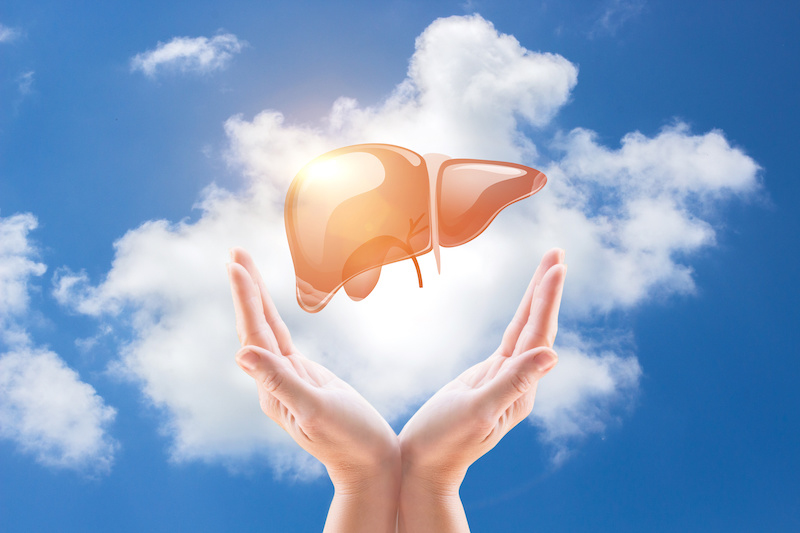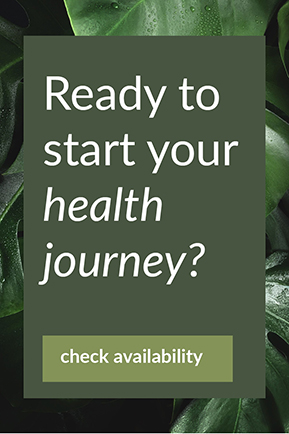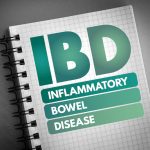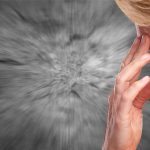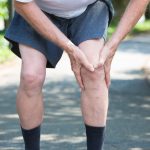Whether you are interested in improving your liver function due to less than optimal liver function tests or symptoms have been identified that indicate suboptimal liver function or you simply decide to take better care of your liver for long term health, then this blog will provide useful information.
Functional liver congestion is a common issue seen in clinic. It’s an issue that is driven by our modern lifestyle, which sees us exposed to an incredible number of toxins in the foods we eat, the products we use, and even the air we breathe. Detoxification is one of the liver’s primary roles, and yet the toxic burden we are exposed to in our day-to-day lives means that for many of us, additional support for the liver may be necessary for optimal health. Thanks to the commercial onslaught of “detox” diets, pills, powders, and teas, the topic of liver health is often fraught with controversy, and it can be difficult to discern what is truly beneficial and what is simply marketing. This blog provides you with education on functional liver congestion – what it is, what are the symptoms, and how it can be managed naturopathically for short-term symptom relief and long-term health.
The Liver
The liver is one of the largest organs in the body and is involved in a range of vital functions, including:
- Detoxifying harmful substances in the body
- Storing and processing nutrients, including carbohydrates, proteins, vitamins and minerals
- Regulating hormone levels
- Producing bile for fat digestion
- Regulating fat and cholesterol levels
- Helps with controlling blood sugar levels
The Liver and Detoxification
Detoxification is a bit of a buzzword these days, but what exactly is it? Detoxification is a normal process that our bodies go through every day to process and remove the waste products and toxins that accumulate in our cells as a result of normal metabolism and exposure to things like air pollutants. Proper detoxification is essential for good health, particularly when we are exposed to so many different types of toxins in our day-to-day lives. Over time, prolonged burdening of the liver with toxins requiring metabolising and elimination can lead to tissue damage and even the onset of further health issues. When the liver is over-burdened with the task of detoxification, it is unable to efficiently perform its other tasks. This is why functional liver congestion can lead to issues with other aspects of liver health, like hormone imbalances.
What are Toxins?
Toxins are chemicals that have a negative impact on our health in one way or another. In modern society we are exposed to a huge range of toxins through the foods we eat, the products we use and even the air we breathe. Examples of ways in which we are exposed to toxins include:
- Pesticides on unwashed fruit and vegetables
- Chemicals in household cleaning products, garden herbicides and household pesticides
- Microplastics in drinking water and foods
- Particles from plastic food containers, including hormone-disrupting chemicals such as BPA
- Pollutants in the air, including heavy metals, car emissions, mould spores, and fine particles
- Heavy metals
- Phthalates, parabens, fragrances, and hormone-disrupting chemicals such as triclosan, found in personal hygiene and beauty products
The 5 Channels of Elimination
Once toxins have been metabolised or neutralised by the liver, they need to be removed from the body. There are 5 different routes through which waste products and toxins are moved out of the body, known as the 5 channels of elimination.
- The lymphatic system removes waste products from individual cells and moves it towards other channels for elimination from the body
- The bowels eliminate waste products in faeces
- The lungs eliminate waste products in the air we exhale
- The kidneys eliminate waste products in urine
- The skin eliminates waste products in sweat
When supporting liver health, it is just as important to be sure we are optimising the health of our elimination channels, to ensure proper removal of waste products. If waste products and toxins aren’t being eliminated from the body efficiently, they can end up back in circulation, creating a perpetuating cycle of liver congestion. The treatment strategies below include ways of supporting these channels of elimination in addition to the liver, for a holistic approach to returning to health.
Signs your Liver is Congested
Signs that your liver may be congested or not functioning optimally include:
- Feeling generally unwell
- Feeling tired in the morning and worse after eating
- Poor concentration or memory problems
- Lack of hunger in the morning or feeling unable to eat breakfast
- Nausea
- Being unable to tolerate fatty foods or alcohol
- Bloating, chronic constipation
- Weight loss, or difficulty losing weight
- Cholesterol issues
- Mood swings, anxiety, irritability
- Itchy skin and skin rashes
- Dry or oily skin
- Yellow skin or eyes
- Muscle pain and weakness
- Headaches or migraines
- Sensitivity to chemicals, smells
- Hormonal issues
Supporting Liver Health
To return to good liver health, we need to follow three key steps:
- Reduce the toxic load
- Repair the gut
- Support the detoxification process
1. Reduce the Toxic Load
Reducing the toxic load of the liver means identifying and removing factors from both the diet and lifestyle that place strain on the liver. This includes not only “toxins” but also certain foods and drinks that make the liver work harder. Factors that increase the liver’s workload (and may need to be eliminated) include:
Foods and Drinks
- Fatty foods and “junk” foods
- Alcohol
- Caffeine
- Pesticides and herbicides on commercially grown foods
- Unfiltered drinking water
- BPA and other hormone-disrupting chemicals in plastic food storage containers
- Food additives and preservatives
Drugs and Toxins
- Pharmaceutical drugs
- Heavy metals
- Inhaled toxins such as cigarette smoke and vaping
- Topical applicants
- Environmental pollutants
- Chemical cleaning products

Other
- Stress
- Sudden weight loss
- Nutrient insufficiencies
- Inflammation, infection
2. Repair the Gut
The gut is one of our primary channels of elimination. Poor gut health can negatively impact liver health by increasing reabsorption of toxins and increasing the liver’s workload. In turn, a liver that is overwhelmed won’t produce sufficient bile for optimal metabolism and won’t be able to adequately process the nutrients that we eat, leading to a vicious cycle.
3. Support the Detoxification Process
As discussed above, the detoxification process includes the work of the liver, as well as the proper functioning of the 5 channels of elimination. There are many things that can be done to help support this process with diet and lifestyle changes. Depending on your health needs, supplements and herbs may also be used to help support the detoxification process.
Dietary Changes
Reduce Caffeine intake
Caffeine should be eliminated if you have decided on a gentle detoxification or significantly reduced from the diet because of the extra work it makes for the liver. Caffeine is found in coffee, tea, chocolate, and energy drinks.
Eliminate Alcohol
As with caffeine, alcohol places additional strain on the liver and should be eliminated from the diet, at least in the short term. Once the liver has improved, you may wish to include alcohol sparingly – one or two glasses of red wine per week.
Eliminate Deep-fried and “junk” foods
These foods place added stress on the liver and should be eliminated from the diet. This includes “fast” food, burgers, hot chips, deep fried foods, cakes, pastries, and highly processed snack foods such as candy bars and potato chips.
Avoid artificial colours and flavours, including MSG
Artificial colours and flavours also increase the liver’s workload. Check the labels of foods you are purchasing – if there are many ingredients that you are unfamiliar with, or the ingredients list includes many different food numbers, it is probably a food to avoid. Both natural and artificial food additives are often listed by their “food number”. Some of the worst offenders to avoid are:
- Colours: 102, 104, 110, 122, 123, 124, 127, 129, 132, 133, 142, 143, 151, 155
- Preservatives: 200- 203, 210-213, 220-228, 249-252
- Preservatives: 280-283, 310-312, 319-321
- Flavour enhancers: 620-627, 631, 635
Eat Plenty of Fibre-Rich Foods
Fibre-rich foods provide plenty of bulk for our stools and help our bowels to function well. These foods are typically also rich in vitamins, minerals and antioxidants that can assist with liver health, too. Fibre-rich foods include vegetables, fruits, and pulses such as lentils and beans. Choose a variety of fibre-rich foods of varying colours each day to maximise the types of micronutrients you are consuming. For vegetables with edible skins, eating with the skin on can further increase insoluble fibre intake – but be sure to choose organic varieties and scrub the skins well before eating. Aim for 5 or more serves of vegetables or pulses each day, and 2 serves of fruit.
- Red fruits and vegetables – contain compounds such as lycopene and anthocyanins
– Tomatoes, capsicum, strawberries, cherries, beetroot, radish, chillies, radicchio, rhubarb, raspberries, cranberries - Orange fruits and vegetables contain compounds such as beta-carotene
– Oranges, capsicum, pumpkin, apricots, carrots, papaya, persimmons, mangoes, sweet potatoes - Yellow and light green fruits and vegetables contain compounds such as carotenoids
– Capsicum, kiwi fruit, corn, pineapple, lemons, cabbage, celery, limes, pears, avocado, fennel, onion - Dark green fruits and vegetables contain compounds such as lutein and zeaxanthin
– Broccoli, Brussels sprouts, kale, Bok choy, spinach, silver beet, asparagus, green beans, peas, leeks, artichokes - Purple fruits and vegetables contain compounds such as anthocyanins and phenols
– Cabbage, grapes, eggplant, onions, plums, blueberries, blackberries
Drink at least 2 litres of (filtered) water each day
Water is absolutely vital for ensuring your body can remove toxins and drinking tap water is not ideal. In NSW, household tap water can contain small amounts of heavy metals like lead and copper, and both bottled and tap water contain microplastics. Although these are only present in very small amounts, using measures to avoid consuming them in the first place reduces the burden on the liver. Using an at-home water filter is an inexpensive way to make sure the water you’re drinking is free from nasties, and as an added bonus, your water will taste better, too! There are a wide variety of water filters available these days, but you don’t need to choose an expensive one for it to be effective. Both bench-top and tap-fitted water filters are readily available from Bunnings.
Thoroughly scrub and wash Fruits and Vegetables before Consumption
To avoid pesticides and other harmful chemicals on your fruits and vegetables, it is best to choose organic produce when possible. However, regardless of whether you have organic or not, it is important to thoroughly scrub and rinse your fruits and vegetables before consumption to remove surface toxins and reduce the liver’s workload.
To clean fruits and vegetables thoroughly, soak hard-skinned products for 10-15 minutes before scrubbing. Fill the kitchen sink with warm water and add 1/3 cup apple cider vinegar. Alternatively, Dr Bronner’s soap can be diluted and used as a fruit and vegetable wash.
Don’t Store or Heat Food in Plastic
Plastic is made of a litany of chemicals, some of which are known to disrupt hormone balance, such as BPA. Plastic food storage containers and cling-wrap can leak these harmful chemicals into your food, especially if you are heating your food in the container or are placing your food into the container when it is still hot. Whilst many plastic food containers advertise as being BPA-free, the majority of them still contain other hormone-disrupting chemicals aside from BPA. Choose glass or ceramic containers to store food in and always reheat foods on the stove. If you don’t want to purchase a whole new set of expensive glass food containers, recycled jars from other foods are a great option! Pasta, pickles, coconut oil, and the like all come in sturdy glass jars that can be readily washed and reused to store food in again and again.
Other tips for safe food preparation:
- Swap plastic cooking utensils with wooden, stainless steel, or silicone types
- Use beeswax wraps as an alternative to cling-wrap
- Choose fresh or frozen fruits and vegetables and dried legumes over canned goods where possible.
- Use a glass or ceramic reusable coffee cup instead of takeaway cups
- Avoid non-stick cooking pans – swap for cast-iron, stainless steel, or ceramic cookware. Always immediately discard Teflon or non-stick cookware that shows any signs of damage
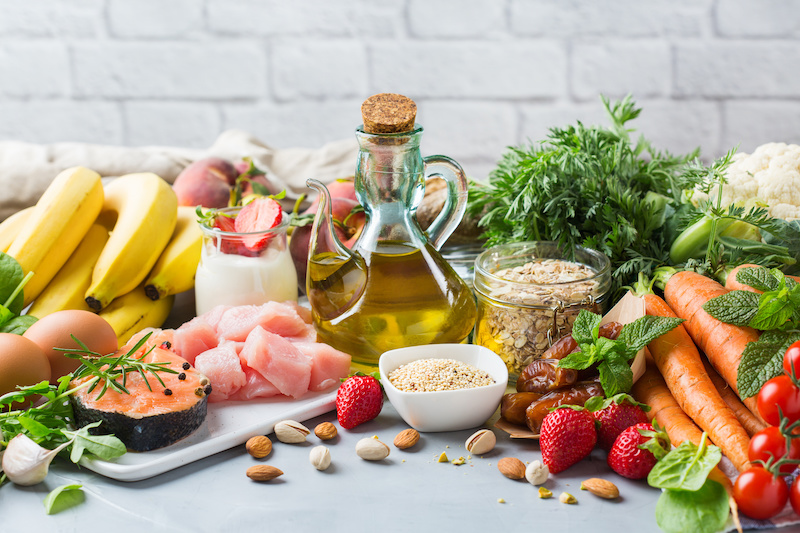
Lifestyle
Exercise Daily
When we are being physically active, our lymphatic system is able to work 2-3 times more efficiently compared to when we are at rest. Physical activity is also important for healthy bowel movements. One of the easiest gentle physical activities is of course walking, and there are plenty of ways to increase your daily activity by walking more. Try parking your car a little further away from work and walking the rest of the way or meet up with friends for walking dates on the weekend. Hiking in nature is my most favourite recommendation to people!
In addition to walking, it’s important to get some more vigorous exercise in as well. This could include team sports, running, cycling, or even aerobics or dancing classes. Not only will these activities promote healthy lung function, but they also improve detoxification by increasing the amount you sweat.
Use the Sauna
Another method for getting sweaty is by visiting the sauna. Both traditional and infra-red saunas are becoming more common in Australia. Studies show that saunas can be a great tool for helping your body to eliminate heavy metals. However, if you have issues with fainting or dizzy spells, the sauna may not be for you. Check with your GP before using a sauna if you have any health concerns.
Practice Dry Brushing Once a Week
Dry skin brushing is a traditional technique for improving circulation and lymphatic flow in the body, and is also an effective, gentle exfoliator, so it can help with the skin and lymphatic channels. Make it a habit to dry brush before your shower once a week.
How to dry brush: Using a soft-bristle body brush, start at the ankles and gently brush the skin in long strokes, working your way up the body and all four limbs. Make sure your brush strokes are all going in the same direction (towards your heart), as this will maximise the circulation benefits. Good quality body brushes are available at many health-food stores, as well as at online stores like biome.com.au
Use Low-Tox Personal Hygiene Products
Personal hygiene products, such as soaps, deodorant, lotions, make-up, and even haircare products, can be a significant source of toxins. These products can contain a litany of harmful chemicals, many of them poorly regulated and prone to contamination with even more harmful substances. Some of the worst offenders that can be found frequently in personal hygiene products include:
- Triclosan: an antibacterial agent that is known to cause liver damage and disrupt hormonal balance. Triclosan is commonly found in deodorants, hand sanitisers, and cleansers. In addition to its ill effects on health, triclosan may also contribute to the development of antibiotic-resistant bacteria.
- Parabens: a widely used preservative in cosmetics that can cause skin allergies, disrupt hormones by mimicking oestrogen, and may even increase the risk of cancer. They are very readily absorbed by the skin.
- BHA and BHT: synthetic antioxidants used as preservatives in many different personal hygiene products. BHA and BHT can cause contact allergic reactions and are classed as a possible carcinogen. They are also linked to organ toxicity and are banned in Europe.
- Phthalates: a class of preservatives found in many different personal hygiene products that can cause hormonal imbalance and impact fertility.
- Sodium laureth sulfate (SLS): a lathering agent (makes soap bubbles) frequently found in body washes and household cleaners such as dish soap. SLS can cause skin irritation and may be contaminated with ethylene oxide, a known carcinogen and neurotoxin.
- Fragrance: sometimes also listed as “parfum” or “perfume”, this is an umbrella term for thousands of different chemicals that are often unsafe and untested – because fragrance recipes are considered to be “trade secrets”, the ingredients aren’t required to be listed on the products. These chemicals may cause hormonal disruptions and allergic symptoms
- Propylene glycol: along with other PEGs (polyethylene glycols) is a hydrating substance that can cause dermatitis and kidney and liver damage. PEGs are frequently used in cosmetics as a cream base for products.
- Coal tar dye: a colouring agent found in shampoos and hair dyes that is a known carcinogen and can be contaminated with heavy metals.
- Formaldehyde: a preservative that is a neurotoxin and known carcinogen.
- Mineral oil: aka petroleum jelly or petrolatum – a “skin smoothing” and moisture-barrier agent that can impair the skin’s ability to eliminate toxins. It can also be contaminated with polycyclic aromatic hydrocarbons, which are associated with cancer.
- Talc: found in baby powder and on condoms, it is linked to ovarian cancer
- Siloxanes: silicone-based products that are used as smoothing agents, particularly in haircare products. They can disrupt hormones, reduce fertility, and are linked to uterine tumours and neurotoxicity.
- Aluminium: used as an antiperspirant agent in deodorants, it is linked to Alzheimer’s disease
– As a side note – one of our skin’s main functions is to release toxins and regulate our body temperature through (you guessed it) sweating. We need to consider whether using anti-perspirants is working with our body’s natural processes or is causing more harm than good. Natural, aluminium-free deodorants are readily available these days and are a much safer alternative which is why I offer non-toxic yet effective deodorants in clinic. - DEA, MEA and TEA: chemicals that are used to make products such as sunscreen, lotions, or soaps creamy or sudsy. Can cause eye and skin irritation, and laboratory research has shown high dose exposure can cause cancers in the liver, skin, and thyroid.
Remember that the skin is like a giant mouth, capable of absorbing whatever you put on it. As a good rule of thumb, don’t apply anything to your skin that you wouldn’t also eat. Avoid the ingredients listed above in all personal hygiene products by reading the labels of products carefully and choosing products with shorter lists of ingredients that you can easily identify (avoid long, complicated scientific names!). A good, basic castile soap can be used as a general-purpose cleaner for face, body, and hair, and can also be used in place of household cleaners such as dish soap, and floor wash. Both scented and unscented varieties are available, with the scented versions using natural essential oils instead of synthetic fragrances.
For sunscreens, choose zinc oxide-based and other physical sun blockers, which aren’t absorbed into the skin and generally contain fewer toxic chemicals. Be sure to still read the labels of sunscreen products. Reduce the amount of sunscreen you need to use by following other sun safe measures, such as wearing long sleeves, a hat, sunglasses, and staying in the shade during the middle of the day.
For insect repellents, use citronella-based products. Both sprays and patches are available and are effective at keeping bugs away.
Perfume, make up and beauty products can be full of toxic ingredients. The small range I have in my clinic ensure that clients have options that are quality and non-toxic. A range of low-tox products can also found in health food stores, as well as online at sites such as www.biome.com.au and www.floraandfauna.com.au. You can also find more information about safer beauty products and harmful chemicals to avoid at www.safecosmeticsaustralia.com.au
Use Low-Tox Household Cleaners
As with personal hygiene products, household cleaners contain many harmful chemicals, and ingredients are not required to be listed on these products so it can be difficult to know what you are being exposed to. Reduce your exposure to unnecessary toxins by choosing low-tox household cleaners (available at the websites listed above) or make your own. A solution of 50/50 white vinegar and filtered water makes a fabulous general-purpose cleaner – simply fill a spray bottle with the solution, add a few drops of essential oils if you choose to, and you’re good to go.
In place of synthetic home fragrance sprays and candles, use essential oils in a diffuser to gently scent the home. Be sure to choose 100% pure essential oils from a reputable company, to avoid synthetic or contaminated products. If you prefer candles, stick to good quality soy or beeswax products.
Consider your Exposure to Other Household Chemicals
Other sources of potentially liver-damaging toxins include:
- New carpet or furniture
- Fresh paint
- New cars
- Chipboard and other treated timber
- Building materials such as glues, plastics, resin
Consider your exposure to these chemicals and strategies ways to reduce or eliminate your exposure where possible, even if it is as simple as keeping windows open in the home to maximise air flow to air out new furniture or paint or using personal protective equipment when completing home renovations or craft projects. Remove your shoes before entering the home to prevent walking toxins into the home.
Consider your occupational chemical exposure
Do you work in an industry that involves exposure to potentially toxic chemicals? If this is a concern for you, speak with your work’s WHS officer for support in ensuring appropriate precautions are being taken to protect your health.
Herbs and Supplements
There are many wonderful herbs and supplements that can help to support the liver and bring it back to health. However, if your liver is congested and not working well, it is likely that as a naturopath I will start very slowly and gently with these products or may start with diet and lifestyle measures only at first. This is because if the liver is not working well, adding more things to the body for the liver to process may do more harm than good. We want to remove very gently some of the burden on the liver first, before introducing new factors. Remember that these products are not going to do the detoxification work for the liver and aren’t replacing the liver’s function. Instead, their purpose is to support the liver to heal and return to its own optimal function.
Once your body is ready for herbal and supplemental treatment, your treatment regime may include:
- Liver herbs, such as milk thistle, globe artichoke, or turmeric
- Cholagogues and choleretics, including dandelion root and globe artichoke
- Depurative herbs, such as burdock, blue flag, and heartsease
- Tonics and adaptogens, such as withania, rehmannia, Schisandra or bacopa
- Antioxidants, such as vitamin C, quercetin, curcumin, and n-acetylcysteine (NAC)
Your liver is one of the most important organs in your body and it must be working optimally for your entire body to work optimally – look after it.

